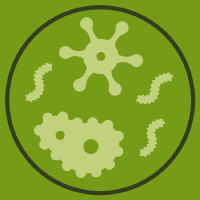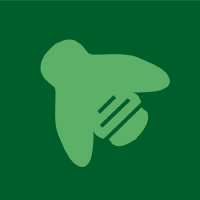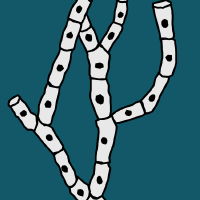Topic Editors

Diversity of Insect-Associated Microorganisms
Topic Information
Dear Colleagues,
Insects play an important role on our planet. They participate in nutrient cycling, pollination, and plant seed dispersal. Constituting the largest phylum by species diversity, insects stand out among animal taxa as a well-known but not-well-explored habitat for microorganisms. Microorganisms and insects engage in various symbiotic interactions. This includes mutualism, wherein yeasts contribute to nutrient breakdown through enzymatic processes, furnish insects with nutrients and essential vitamins, and provide antimicrobial defense. In exchange, insects offer a secure niche for reproduction, act as transportation agents, and facilitate access to food sources in natural environments. Despite the well-documented importance of these associations, our knowledge of microorganism biodiversity associated with insects in various regions of our planet remains limited. Most studies on yeast biodiversity have been concentrated in regions such as Western Europe, Japan, and North America. Moreover, most yeast strains maintained in world culture collections have been isolated from food products, plants, and human sources. We cordially invite authors to contribute articles on the Topic “Diversity of Insect-Associated Microorganisms”, launched by the MDPI journals Applied Microbiology, Forests, Insects, Journal of Fungi, and Microorganisms.
Dr. Dilnora E. Gouliamova
Prof. Dr. Teun Boekhout
Topic Editors
Keywords
- biodiversity
- microorganisms
- insects
- symbiosis
- pathogens
Participating Journals
| Journal Name | Impact Factor | CiteScore | Launched Year | First Decision (median) | APC | |
|---|---|---|---|---|---|---|

Applied Microbiology
|
- | 2.8 | 2021 | 13.3 Days | CHF 1200 | Submit |

Forests
|
2.5 | 4.6 | 2010 | 17.1 Days | CHF 2600 | Submit |

Insects
|
2.9 | 5.6 | 2010 | 18.1 Days | CHF 2600 | Submit |

Journal of Fungi
|
4.0 | 8.4 | 2015 | 18.2 Days | CHF 2600 | Submit |

Microorganisms
|
4.2 | 7.7 | 2013 | 15.2 Days | CHF 2700 | Submit |

Preprints.org is a multidisciplinary platform offering a preprint service designed to facilitate the early sharing of your research. It supports and empowers your research journey from the very beginning.
MDPI Topics is collaborating with Preprints.org and has established a direct connection between MDPI journals and the platform. Authors are encouraged to take advantage of this opportunity by posting their preprints at Preprints.org prior to publication:
- Share your research immediately: disseminate your ideas prior to publication and establish priority for your work.
- Safeguard your intellectual contribution: Protect your ideas with a time-stamped preprint that serves as proof of your research timeline.
- Boost visibility and impact: Increase the reach and influence of your research by making it accessible to a global audience.
- Gain early feedback: Receive valuable input and insights from peers before submitting to a journal.
- Ensure broad indexing: Web of Science (Preprint Citation Index), Google Scholar, Crossref, SHARE, PrePubMed, Scilit and Europe PMC.

